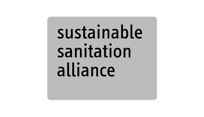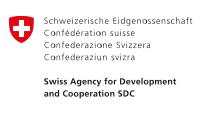Downcycling is a process in which plastic waste is mixed with other materials and transformed into new products with a lower value and reduced material properties. The products can be used for different purposes, for example, as construction materials U.4. Expertise and care are required as it can lead to microplastic pollution and jeopardise occupational safety X.4, public health and environmental protection.

Downcycling is the process of transforming materials into products of lesser quality, value and functionality than the original. The mixing of different materials leads to a gradual loss of material value, ultimately rendering products impossible to recycle and, as a result, subsequently contributing to landfill waste. The reduction in functionality occurs as the downcycled materials are used for less demanding purposes, such as filling bottles with sand instead of drinking water. Plastic downcycling requires expert knowledge; it is controversial as it can create risks to occupational safety X.4, public health and the environment. Thermal processing can generate toxic fumes and the use of downcycled plastics can accelerate microplastic pollution. Microplastics are generated from the disintegration of plastics through abrasion or UV-light-induced decomposition. Although microplastics have been found in human food chains, and even human blood, the health risks remain unclear.
Design Considerations
Plastic downcycling is achieved with or without thermal modification. ’Ecobricks’ are an example of a product without modification in which bottles are filled with sand or compacted plastic waste to replace ordinary construction materials. Fillings can include non-recyclable plastic waste. With-thermal modification products include pavement stones or tiles for which plastic is melted, mixed with sand and pressed into shapes. Thermal processing must be restricted to homogeneous plastic types. Different plastics have different melting temperatures, and overheating can lead to weakened material properties and toxic fumes. Outdoor applications need to be evaluated as products might not be resistant to UV light or suffer from abrasion from vehicles and pedestrians. Both can lead to microplastic formation.
Materials
Equipment requirements depend on the type of downcycling. Without thermal modification, the required equipment is usually limited to simple hand-held tools. ’Ecobricks’, for instance, only require bottles, sand or plastic film for the filling and a hard stick to compress the plastics into the bottles. Thermal modification requires equipment for melting and compressing the plastic-sand mix into moulds and must include temperature controls to prevent overheating the plastic.
Applicability
Plastic downcycling is more appropriate in stable, recovery, protracted or development contexts, especially for thermal modification. Its implementation by humanitarian actors should be restricted to contexts without plastic recycling services or to plastic types without market interest. Competing with the private sector and distorting the market must be avoided X.5. Implementation in urban or peri-urban settings is more feasible as the availability of suitable waste materials may be limited in rural areas. In all cases, better and safer management options need to be assessed first, such as the handover of recyclables to the private sector U.1 or their safe disposal (U.8 and U.9). Although Plastic downcycling can create livelihood opportunities, it must respect the “Do No Harm” principle and never compromise occupational X.4, environmental or public health safety.
Operation and Maintenance
Plastic downcycling without thermal modification is straightforward and does not require special skills. However, specialised expertise and equipment are needed to safely conduct thermal downcycling and to ensure end product quality. Such expertise is unlikely to be available in local communities or humanitarian actors. Partnerships with, and guidance from, specialised organisations or the private sector is required. If downcycled products are used for construction, adequate training is needed to ensure the structural integrity of the constructed buildings U.4.
Health and Safety
Plastic downcycling must consider occupational, public health and environmental risks and confine thermal modification to clean and homogenous plastic types. It is essential that processing facilities prevent the uncontrolled release of plastic particles or toxic fumes. Staff must be thoroughly trained and equipped with personal protective equipment X.4. The quality and safe use of the end products should be evaluated.
Costs
The infrastructure, equipment and energy required for thermal downcycling incur significant costs. The cost of non-thermal downcycling is much lower. For both thermal and non-thermal downcycling, the sale value of produced items can be low. Financial sustainability is lower for the typically small or medium-scale production viable in humanitarian settings.
Social Considerations
Establishing parallel plastic processing facilities and creating competition with private sector actors must be avoided. Thermal downcycling requires skilled staff who may not be available in humanitarian settings and remote locations. Communities may be unaware of the public health and environmental risks of plastic downcycling and the risk of using poor-quality end products.
Key Decision Criteria
Input Products
Plastics
Output Products
Products from Processed Plastic
Response Phase
Application Level
Management Level
Space Required
medium
Technical Complexity
medium,low
Objectives & Key Features
Small and non-industrial scale processing of recovered plastic into lower value products, Waste diversion from disposal
Strength & Weakness
- Can reduce waste amounts in humanitarian settings to a limited degree
- Products can be used in selected fields of application, such as construction
- Can lead to occupational hazards and risks to public health and the environment
- Products can lead to microplastic pollution






